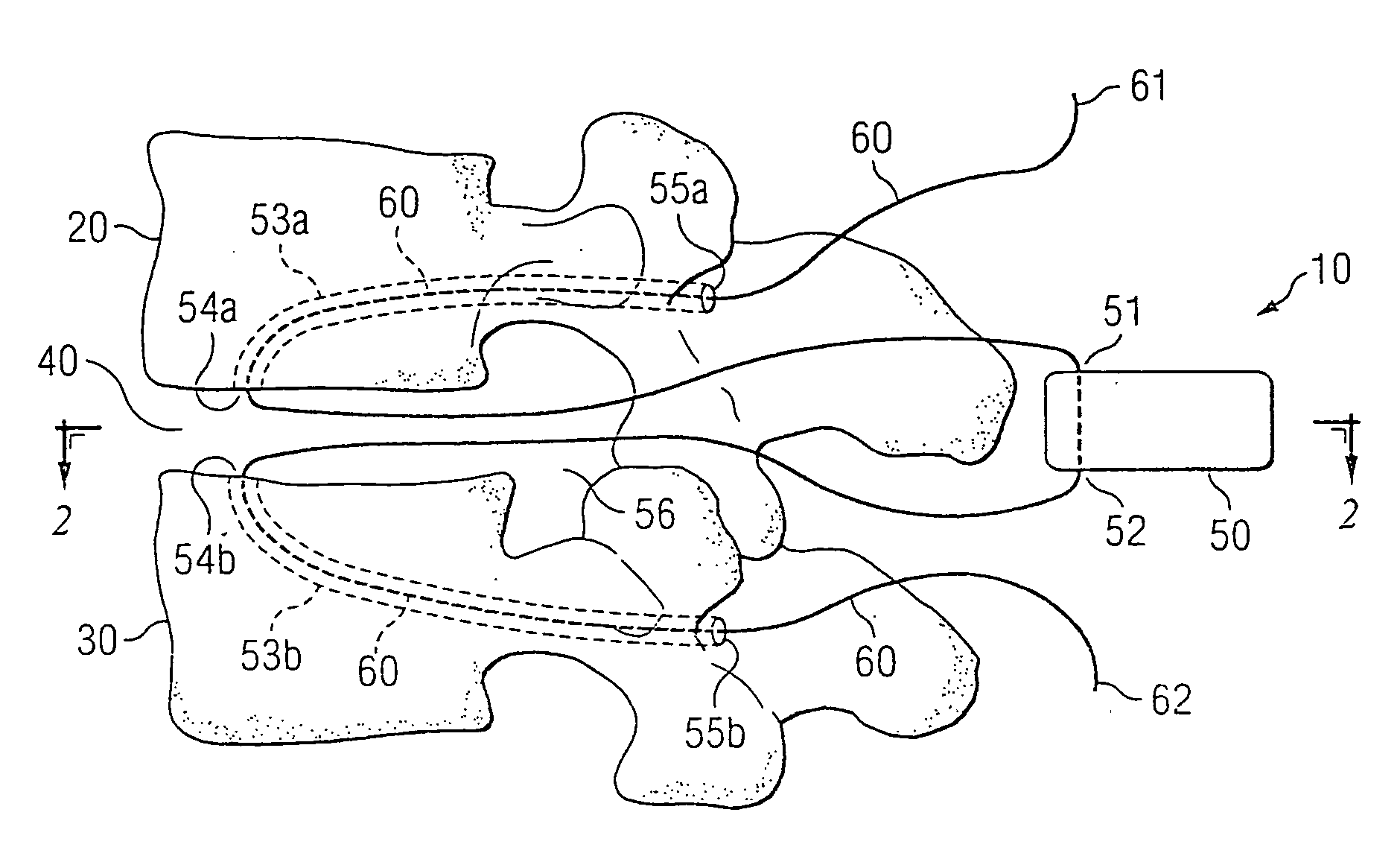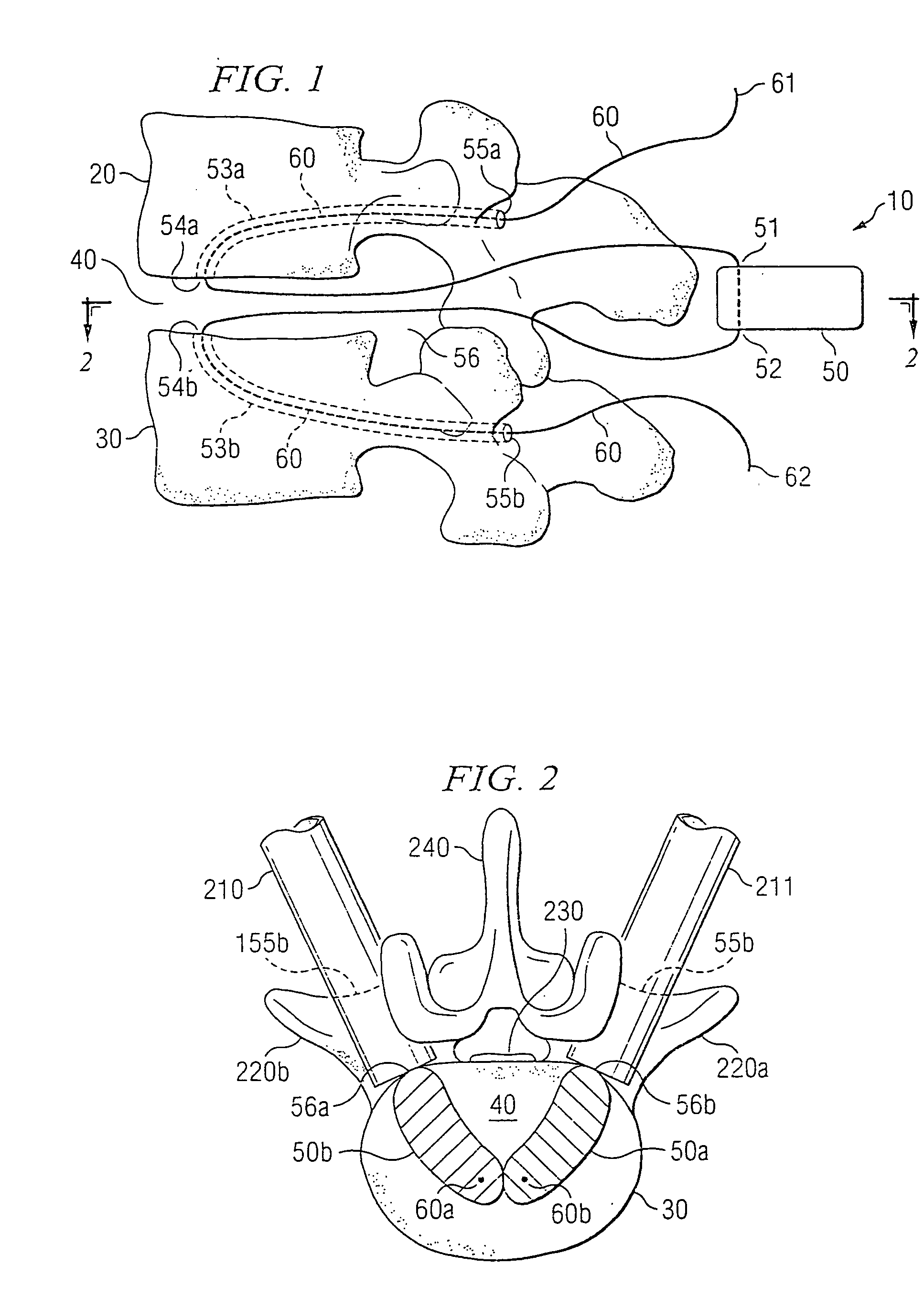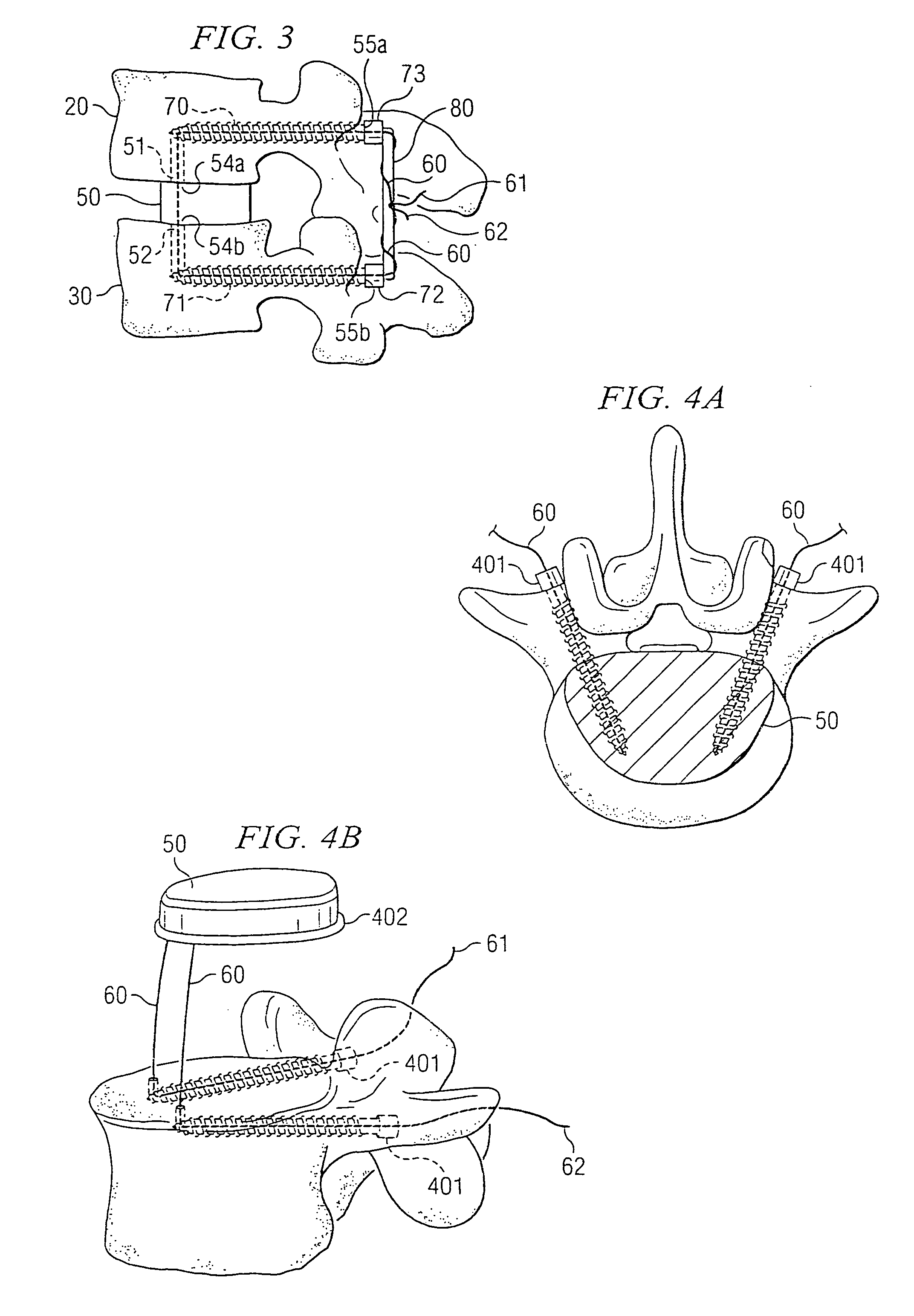Nucleus replacement securing device and method
a nucleus and securing device technology, applied in the field of nucleus replacement securing, can solve the problems of reducing the cushioning ability, degenerative effects, pain in the back and lower extremities,
- Summary
- Abstract
- Description
- Claims
- Application Information
AI Technical Summary
Benefits of technology
Problems solved by technology
Method used
Image
Examples
Embodiment Construction
[0019] Turning now to FIG. 1, vertebral segment 10 includes superior vertebral level 20 and inferior vertebral level 30. These are shown as level L4 and level L5 in this example, however the concepts taught herein could be used at any level in the spine. A description of a first embodiment of a device and method for using the device for inserting and securing a replacement nucleus within a disc space is now described in connection with vertabral segment 10 of FIG. 1. FIG. 1 shows a nucleus replacement 50 which must be inserted into the disc space 40. To assist this endeavor, two holes 53a and 53b are drilled into the vertebral levels 64, 65 using fluoro to track a cutting bit in its path, starting from the opening of the pedicles 55a, 55b and extending on a curved path to the disc space 40 as shown.
[0020] After the holes are drilled, a suture 60 starting with end 62 is passed through the L4 pedicle opening 55a, through the first tunnel 53a, and into the disc space 40 passing the en...
PUM
 Login to View More
Login to View More Abstract
Description
Claims
Application Information
 Login to View More
Login to View More - R&D
- Intellectual Property
- Life Sciences
- Materials
- Tech Scout
- Unparalleled Data Quality
- Higher Quality Content
- 60% Fewer Hallucinations
Browse by: Latest US Patents, China's latest patents, Technical Efficacy Thesaurus, Application Domain, Technology Topic, Popular Technical Reports.
© 2025 PatSnap. All rights reserved.Legal|Privacy policy|Modern Slavery Act Transparency Statement|Sitemap|About US| Contact US: help@patsnap.com



